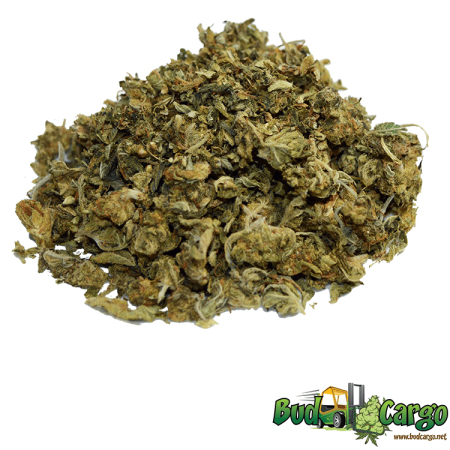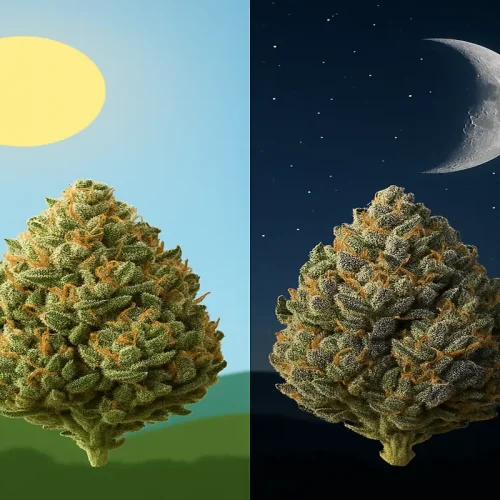Cannabis Sativa: An In-Depth Exploration of the Plant, Its Properties, and Its Uses
Cannabis Sativa, also known as marijuana, weed, or pot, is a plant that has been used for both medicinal and recreational purposes for thousands of years. In recent years, as more countries have legalized its use, there has been a renewed interest in the plant, its properties, and its uses. This article will explore the different aspects of Cannabis Sativa, from its history and properties to its benefits and drawbacks.
Table of Contents
- Introduction
- What is Cannabis Sativa?
- The History of Cannabis Sativa
- Properties of Cannabis Sativa
- Cannabinoids
- Terpenes
- Flavonoids
- Other Compounds
- Uses of Cannabis Sativa
- Medicinal Uses
- Recreational Uses
- Industrial Uses
- How Does Cannabis Sativa Affect the Body?
- The Endocannabinoid System
- Short-Term Effects
- Long-Term Effects
- The Legality of Cannabis Sativa
- Potential Benefits of Cannabis Sativa
- Pain Relief
- Anxiety and Depression
- Epilepsy and Seizures
- Nausea and Vomiting
- Cancer
- Potential Drawbacks of Cannabis Sativa
- Addiction
- Impairment
- Memory and Cognitive Function
- Psychosis
- Conclusion
- FAQs
- How does Cannabis Sativa differ from Cannabis Indica?
- Can Cannabis Sativa be used to treat opioid addiction?
- How is Cannabis Sativa consumed?
- Is it safe to use Cannabis Sativa during pregnancy?
- Can you overdose on Cannabis Sativa?
1. Introduction
Cannabis Sativa is a plant that has been the subject of much controversy over the years. Despite this controversy, it is becoming increasingly clear that the plant has numerous benefits that cannot be ignored. In this article, we will explore the various aspects of Cannabis Sativa, including its history, properties, uses, and potential benefits and drawbacks.
2. What is Cannabis Sativa?
Cannabis Sativa is a plant that is native to Central Asia and the Indian subcontinent. It is a member of the Cannabaceae family and is closely related to hops. The plant has been used for both medicinal and recreational purposes for thousands of years.
3. The History of Cannabis Sativa
The history of Cannabis Sativa can be traced back thousands of years. The plant was used in ancient China and India for medicinal purposes, as well as for its fiber and seeds. It was introduced to Europe in the 16th century, where it was initially used for its fiber.
In the United States, Cannabis Sativa was widely used as a medicinal plant in the 19th and early 20th centuries. However, in the early 20th century, the plant became the subject of much controversy, and its use was eventually outlawed.
4. Properties of Cannabis Sativa
Cannabis Sativa contains a variety of compounds that are responsible for its effects. These compounds include cannabinoids, terpenes, flavonoids, and other compounds.
4.1 Cannabinoids
Cannabinoids are the most well-known compounds in Cannabis Sativa. The two most abundant cannabinoids are tetrahydrocannabinol (THC) and
CBD. THC is responsible for the plant’s psychoactive effects, while CBD has been shown to have a variety of medicinal properties.
4.2 Terpenes
Terpenes are a class of compounds that are responsible for the plant’s aroma and flavor. They are also believed to have medicinal properties of their own.
4.3 Flavonoids
Flavonoids are a group of compounds that are responsible for the plant’s color. They have been shown to have anti-inflammatory and antioxidant properties.
4.4 Other Compounds
In addition to cannabinoids, terpenes, and flavonoids, Cannabis Sativa contains a variety of other compounds that may contribute to its effects. These include alkaloids, lignin, and steroids.
5. Uses of Cannabis Sativa
Cannabis Sativa has a wide range of uses, including medicinal, recreational, and industrial.
5.1 Medicinal Uses
Cannabis Sativa has been used for medicinal purposes for thousands of years. Today, it is used to treat a variety of conditions, including chronic pain, anxiety and depression, epilepsy, nausea and vomiting, and cancer.
5.2 Recreational Uses
Cannabis Sativa is also used for recreational purposes. Its psychoactive effects can produce feelings of relaxation and euphoria.
5.3 Industrial Uses
Cannabis Sativa has a variety of industrial uses, including the production of paper, textiles, and building materials.
6. How Does Cannabis Sativa Affect the Body?
Cannabis Sativa affects the body in a variety of ways. Its effects are mediated by the endocannabinoid system, a complex system of receptors and neurotransmitters that is involved in regulating a variety of physiological processes.
6.1 The Endocannabinoid System
The endocannabinoid system is involved in regulating a variety of physiological processes, including mood, appetite, and pain sensation. It is composed of two types of receptors, CB1 and CB2.
6.2 Short-Term Effects
The short-term effects of Cannabis Sativa include feelings of relaxation and euphoria, increased appetite, and altered perception of time.
6.3 Long-Term Effects
The long-term effects of Cannabis Sativa are less well understood. Some studies have suggested that long-term use may be associated with a variety of negative health outcomes, including impaired memory and cognitive function, addiction, and psychosis.
7. The Legality of Cannabis Sativa
The legality of Cannabis Sativa varies widely from country to country. In some countries, it is legal for medicinal and/or recreational purposes, while in others, it remains illegal.
8. Potential Benefits of Cannabis Sativa
Cannabis Sativa has been shown to have a variety of potential benefits, including:
8.1 Pain Relief
Cannabis Sativa has been shown to be effective in treating chronic pain.
8.2 Anxiety and Depression
Cannabis Sativa has been shown to have anti-anxiety and antidepressant effects.
8.3 Epilepsy and Seizures
Cannabis Sativa has been shown to be effective in treating seizures associated with epilepsy.
8.4 Nausea and Vomiting
Cannabis Sativa has been shown to be effective in treating nausea and vomiting associated with chemotherapy.
8.5 Cancer
Cannabis Sativa has been shown to have anti-cancer properties.
9. Potential Drawbacks of Cannabis Sativa
Cannabis Sativa also has potential drawbacks, including:
9.1 Addiction
Cannabis Sativa can be addictive, especially with long-term use.
9.2 Impaired Cognitive Function
Long-term use of Cannabis Sativa has been associated with impaired cognitive function, particularly in areas such as memory and attention.
9.3 Psychosis
Cannabis Sativa use has also been associated with an increased risk of developing psychotic disorders such as schizophrenia, particularly in those who are genetically predisposed.
9.4 Respiratory Issues
Smoking Cannabis Sativa can cause respiratory issues such as coughing, wheezing, and bronchitis.
9.5 Legal Issues
In many countries, Cannabis Sativa remains illegal, and possession and use can result in legal consequences.
10. Conclusion
Cannabis Sativa is a complex plant with a variety of potential benefits and drawbacks. Its use for medicinal, recreational, and industrial purposes is widespread, and ongoing research is exploring its potential therapeutic applications. However, it is important to consider the potential risks and drawbacks associated with Cannabis Sativa use, particularly with long-term or heavy use.
FAQs
1. Is Cannabis Sativa legal?
The legality of Cannabis Sativa varies from country to country. In some countries, it is legal for medicinal and/or recreational purposes, while in others, it remains illegal.
2. What are the potential benefits of Cannabis Sativa?
Cannabis Sativa has been shown to have potential benefits for a variety of conditions, including chronic pain, anxiety and depression, epilepsy, nausea and vomiting, and cancer.
3. What are the potential drawbacks of Cannabis Sativa?
Potential drawbacks of Cannabis Sativa include addiction, impaired cognitive function, psychosis, respiratory issues, and legal consequences in many countries.
4. How does Cannabis Sativa affect the body?
Cannabis Sativa affects the body through the endocannabinoid system, a complex system of receptors and neurotransmitters involved in regulating physiological processes.
5. Can Cannabis Sativa be addictive?
Yes, Cannabis Sativa can be addictive, particularly with long-term us

























